Providing appropriate light for succulents can be difficult, especially when you live in a region where natural light is scarce. The majority of succulents enjoy bright, indirect light.
In addition, succulents are incredibly flexible, and some varieties may even flourish in the shadow. Here’s a list of the best indoor succulents in low light:
- Aloe Vera
- Gasteria
- Haworthia margaritifera
- Echeverias
- Rhipsalis
- Kalanchoe
- Hoya
- Snake Plant (Sanseveria Trifasciata)
- Recurvata Beaucarnea
If you are growing succulents in less than optimum lighting conditions, keep reading to find out the top 9 best indoor succulents in low light and all their characteristics. You might also enjoy reading: Top 10 Amazing Benefits Of Succulent Plants On Your Mind and Body.
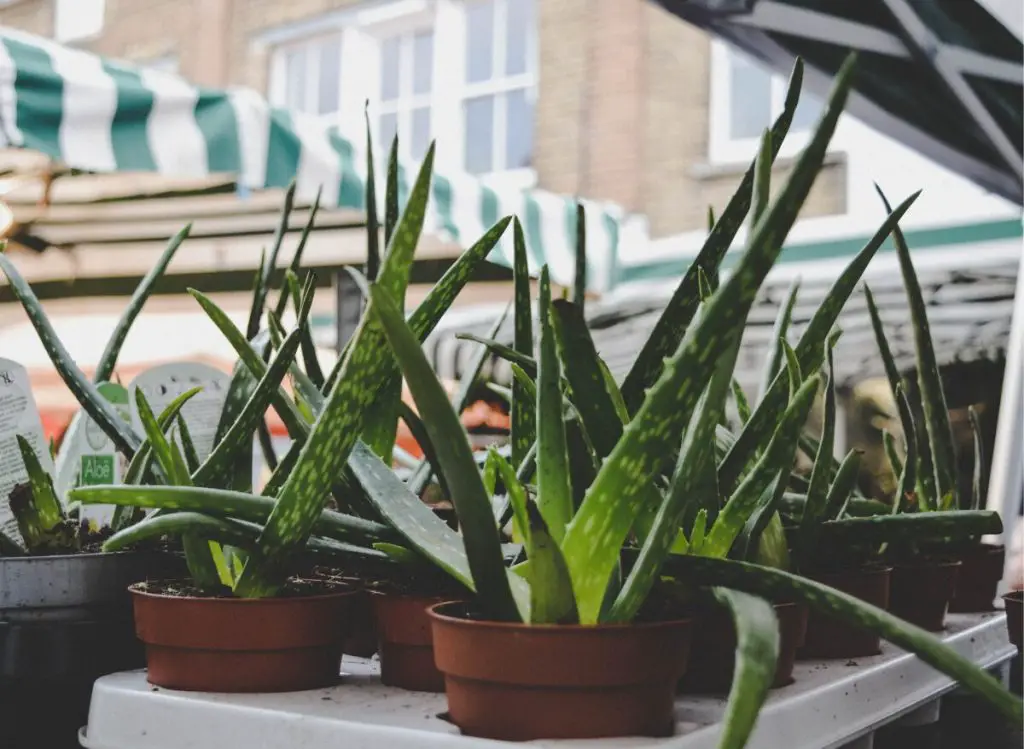
9 Best Indoor Succulents Low Light
Even though succulents are generally sun-loving plants, there are also many indoor succulents that thrive in low light.
Here is a list of the top 9 best indoor succulents in low light, including their characteristics.
1- Aloe Vera
Aloe is a vast genus that includes small dwarf species as well as big tree-like plants that may grow up to 30 feet tall (10m). In the shade, small aloe species, dwarf species, and hybrids thrive and make excellent interior house flowers in pots and containers.
They have thick, meaty leaves that are green to bluish-grey-green. White specks can be observed on the stalk surfaces of some types. Clusters and offshoots are how they spread. Even if they are suitable, these plants make excellent novice or starting plants.
Despite this, the plant flourished and continued to grow. It had to be replanted several times since it generated so many spinoffs and young plants.
| Common name | Aloe |
| Watering requirements | Water Aloe Vera once a month during wintertime. |
| Type | Herbaceous perennial |
| Family | Asphodelaceae |
| Height | 12 to 24 inches (30.48 to 60.96 cm) |
| Spread | 6 to 12 inches (15.24 to 30.48 cm) |
| Sun exposure | Full sun |
| Temperature | – 50F to 60F degree nights in summer – Minimum of 40F degrees in winter. |
| Flower Color | Yellow |
| Maintenance Requirement | Low |
| USDA Hardiness Zone | 10 to 12 |
| Region of Origin | Arabian Peninsula |

2- Gasteria
It gets its name from the form of the bloom it creates, which resembles a stomach. The word “gaster” comes from the Latin word “gastrum.” They are indigenous to South Africa and thrive in light shade with lots of rain.
See also: Best Tips To Propagating Succulents with Honey.
They feature curving, stomach-shaped blooms and long, thick, grooved leaves. Most bacteria species evolved to grow inside and can tolerate low light levels. They work well in hot, bright, but indirect light as well.
Most people require shelter from extreme heat or direct sunlight. They’ve become popular indoor houseplants, and they thrive in pots and pots, as well as in shady regions.
| Genus name | Gasteria spp. |
| Common name | Oxtongue, gasteria, Cow’s tongue |
| Plant type | Perennial succulent |
| Mature Size | Between 4 to 24 inches (10.16 to 60.96 cm) tall |
| Watering requirements | A rich, sandy, and well-draining soil |
| Sun exposure | Grow well in full sun to part shade. |
| Temperature | Grow well in temperatures above 50 degrees Fahrenheit |
| pH | 6 to 7 |
| Soil requirement | Rich, sandy, and well-draining soil |
| Flower Color | Pink and red |
| USDA Hardiness Zone | 9 – 11 |
| Region of Origin | South Africa |
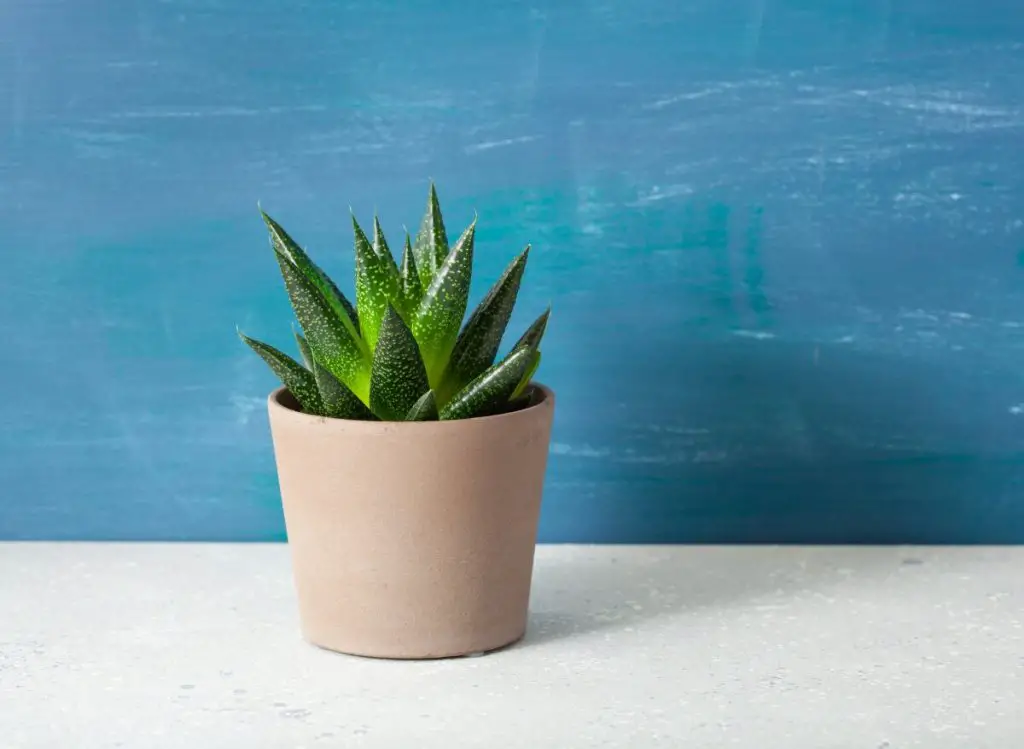
3- Haworthia margaritifera
These are a vast genus of miniature succulents native to South and South-West Africa. Some haworthia species have a similar look to aloe vera, and it can be mistaken for it.
Although most haworthia species can grow in low light, they thrive in a bright, warm climate. They require shelter from extreme heat or direct sunlight and are among the best indoor succulents and low-light plants.
See also: Haworthia fasciata vs. Attenuata: How Can You Differentiate Them?
Many species have stiff, meaty leaves that are generally dark green, while others have gentler, plump leaves with transparent, glassy surfaces that let sunlight pass through for photosynthesis.
| Genus name | Haworthia |
| Common name | – Zebra Cactus – Haworthia – Pearl plant – Star window plant – Cushion aloe |
| Family | Asphodelaceae |
| Plant type | Perennial succulent |
| Plant size | – 3 to 5 inches (7.62 to 12.7 cm) tall and wide – Some species of Haworthia can reach 20 inches (50.8 cm) tall |
| Watering requirements | Water about twice a month during summer and once during winter. |
| Sun exposure | Thrives in full sun and partial shade. |
| Temperature | Most haworthia species require at 50 degrees Fahrenheit to thrive. |
| Flower Color | White |
| USDA Hardiness Zone | 9 – 11 |
| Region of Origin | South Africa |
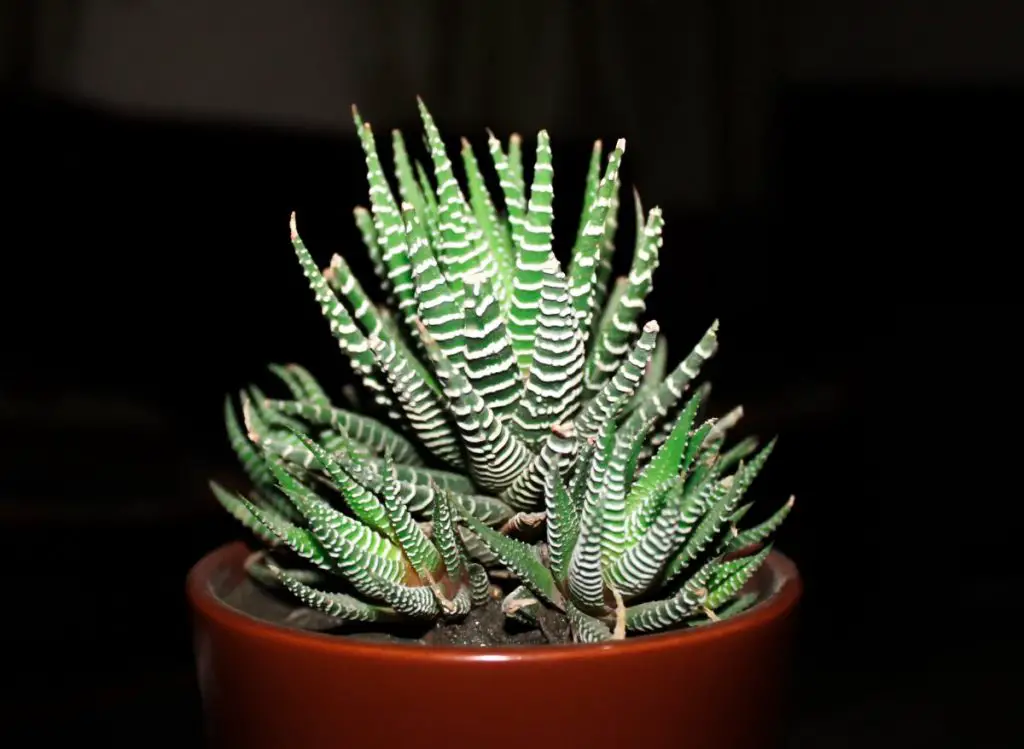
4- Echeverias
Echeverias may be found from Mexico to northwestern South America. Echeverias are known for their beautiful rosettes with intricate details. Rosettes come in a variety of forms and sizes, ranging from compact, short-stemmed rosettes to lengthy stems with drooping rosettes.
See also: What Are The Differences Between Echeveria vs. Aeonium?
Most people require filtered strong light but must be shielded from direct sunlight. They’re native to Mexico, and they’re not frost-hardy plants.
| Genus name | Echeveria spp. |
| Common name | Echeveria |
| Watering requirements | a rich and well-draining soil |
| Mature size | 12 inches (31 cm.) |
| Plant type | Succulent |
| Sun exposure | Grow well in direct and bright light |
| Soil type | rich and well-draining soil |
| Temperature | Echeveria thrives in temperature between 65 F to 70 F in summer and 50 F in winter. |
| Flower Color | Depending on the variety |
| USDA Hardiness Zone | 9 to 11 |
| Region of Origin | Central America |
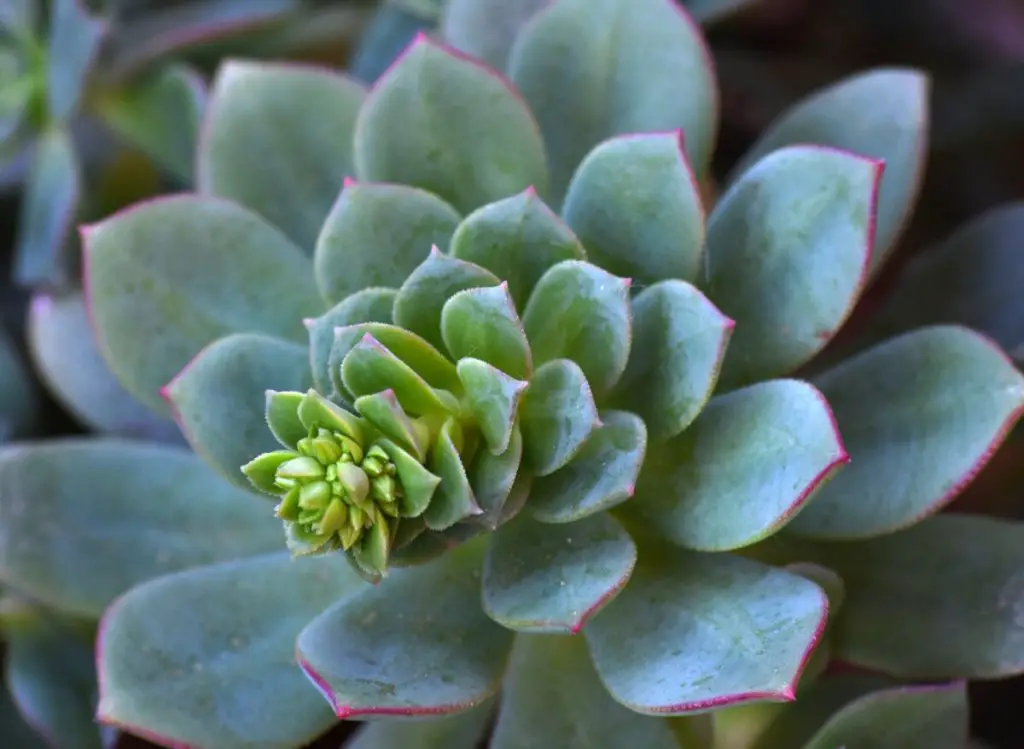
5- Rhipsalis
Rhipsalis is a cactus genus found in South America’s jungles and South America. It stands out from other succulents for two reasons. For starters, they are members of the genus by origin.
Plants that grow just on the surface of many other plants are known as epiphytes. Moisture and nutrients are obtained from their environment. The second feature that distinguishes them and makes them one of the best indoor succulents of low light is that they are endemic to rainforests.
See also: What Temperature Is Actually Too Cold For Succulents?
Whereas most people seem to think about cacti and succulents as tropical plants that thrive in bright, dry circumstances, Rhipsalis does not. It will thrive as an indoor plant or in low-light environments.
Rhipsalis plants thrive in full sun in the morning and full shade in the afternoon. With thick, overhanging tree branches encircling its natural environment, Rhipsalis is well protected from the sun’s rays.
| Genus name | Rhipsalis spp. |
| Common name | Mistletoe cactus |
| Plant Type | Epiphytic cacti or llthophytic |
| Mature Size | Depending on the species and age of the plant, they can grow up 12 to 240 inches (30.48 to 609.6 cm). |
| Watering requirements | – Keep the mistletoe cactus moist, but avoid overwatering them. – When you see falling leaves, it can mean that the plant is overwatered. |
| Soil pH | Mistletoe cactus thrives in acidic pH between 5.0 to 6.5 |
| Sun exposure | Mistletoe cactus prefers part shade to full shade |
| Temperature | – Rhipsalis plants thrive in warm tropical temperatures above 50 degrees Fahrenheit. – Mistletoe cactus are not tolerant of frost. – During the dry months of winter, you can provide them with extra moisture by putting them in a room humidifier. |
| Flower Color | Creamy yellow or white |
| Bloom Time | When grown in ideal conditions, Rhipsalis generally bloom year-round depending on the species. |
| USDA Hardiness Zone | 9 to 11 |
| Region of Origin | Africa, South America, and Tropical. |
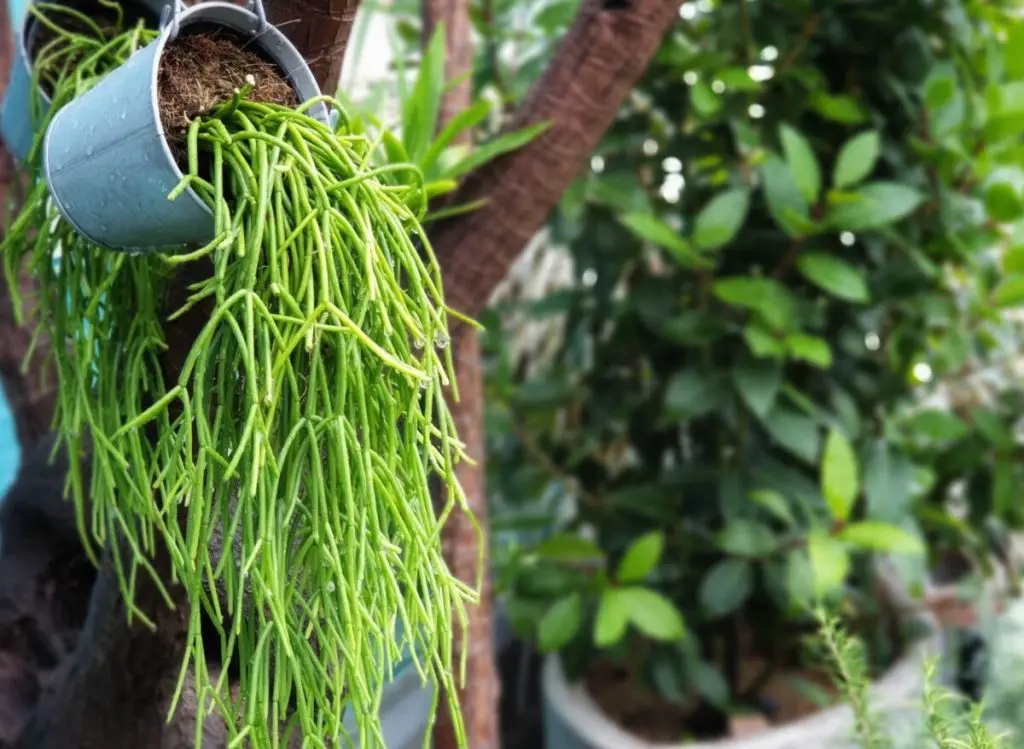
6- Kalanchoe
Native to Madagascar, Kalanchoe has tiny bushes with thick succulent foliage and comes in a variety of shapes. And it is one of the best indoor succulents in low light with little shrubs with dense succulent foliage.
Some leaves are smooth, while others have fine fuzzy hair covering them. Kalanchoes are excellent interior house plants and are frequently used as potted plants.
Find out the truth about growing succulent plants in the shade.
They are incredibly versatile and simple to cultivate, surviving in low light while preferring bright, indirect light, and can even withstand extreme heat. They create clusters of brightly colored blossoms and flowers.
| Genus name | Kalanchoe blossfeldiana |
| Common name | – Flaming Katy – Kalanchoe – Christmas kalanchoe |
| Family | Crassulaceae |
| Plant type | – Succulent – Perennial |
| Plant size | 6 to 18 inches (15.24 to 45.72 cm) |
| Watering requirements | – If you have a habit of sometimes forgetting to water your plants, a kalanchoe can be perfect for you. – It thrives with minimal watering, only every few weeks and even less often during winter. |
| Sun exposure | It thrives in full sun to partial shade |
| Soil requirements | It grows well in rich, well-drained, and sandy soil. |
| Temperature | Between 55 to 80 degrees Fahrenheit |
| Flower Color | – Orange – Yellow – Pink – Red – White |
| Toxicity | Even though they are considered non-toxic to humans, they are toxic to pets. |
| USDA Hardiness Zone | 10 to 12 |
| Region of Origin | Madagascar (Africa) |

7- Hoya
Hoya plants are recognized for their thick, nearly heart-shaped leaflets and vine-like features and are native to South India, East Asia, and Australia. The Indian Rope or Honey Plant is another name for Hoyas.
See also: How To Successfully Deal With Splitting Lithops?
Succulents aren’t found in all hoya species, although some are. These plants don’t require direct sunshine to thrive. Most thrive in part shade and require shelter from both extreme heat and frost. They are commonly planted as indoor plants in hanging baskets.
| Genus name | Hoya carnosa |
| Common name | – Hoya – Waxflower – Wax plant – Honey plant – Indian rope plant – Porcelain flower |
| Plant type | Tropical succulent |
| Plant size | 144 to 240 inches (365.76 to 609.6 cm) |
| Watering requirements | – It is a good idea to water hoyas weekly. -Allow it to dry completely between waterings. – Hoyas do best in moist and warm, humid climates. |
| Sun exposure | Hoyas prefer bright and natural light. |
| pH | 6.1 to 7.5 |
| Bloom time | – Summer – Spring – Fall |
| Flower Color | – Near black – Pink – White – Yellow – Orange – Burgundy |
| USDA Hardiness Zone | 8 to 11 |
| Region of Origin | Australia and tropical Asia |
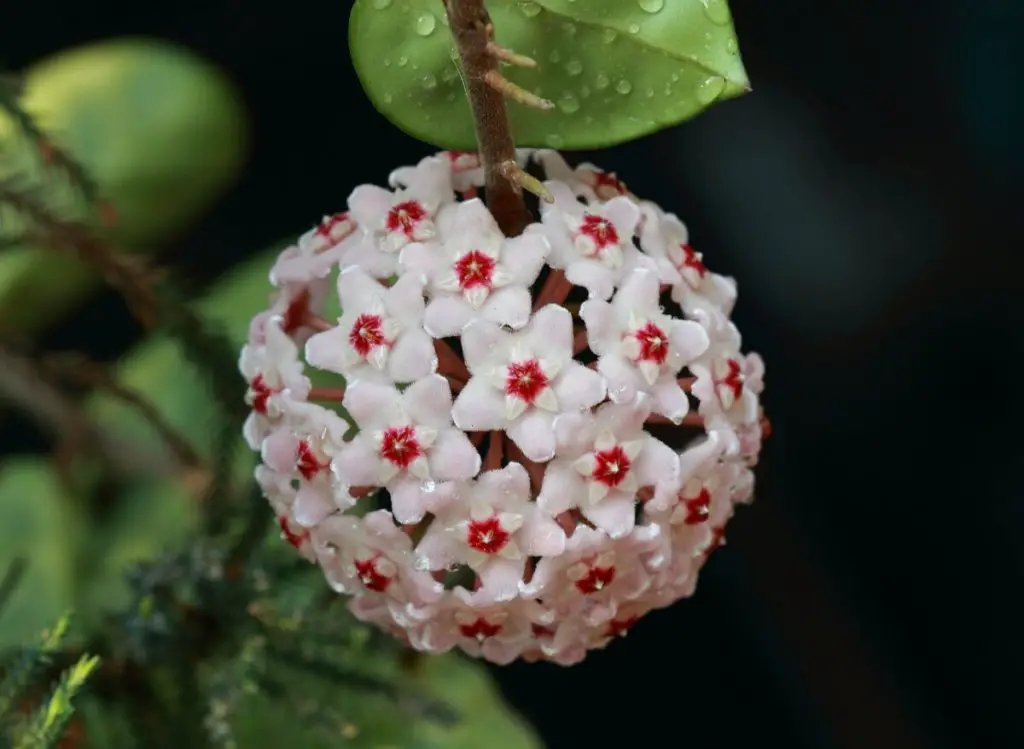
8- Snake Plant (Sanseveria Trifasciata)
Snake plants (commonly called Mother-in-Tongue) have long, somewhat windy leaves that point upwards. Sansevieria’s leaves are primarily green, with yellow margins on certain kinds. And, because of their capacity to endure neglect, these plants make great starting plants.
Snake plants prefer low – to – medium indirect light, so they’re good for the inside. Even though they can endure low light, brilliant light brings out the actual color of their leaves. To avoid sun damage, they must be sheltered from direct sunlight.
See also: How To Properly Repot Overgrown Succulents Like A Pro (A quick guide).
Snake plants are well-known for purifying the air in your house by eliminating formaldehyde and benzene pollutants, making them a popular plant. Snake plants, like other succulents, do not like being overwatered or sitting in water. Snake plants may live for decades and grow up to 5 feet tall if given the right growth conditions.
| Genus name | Dracaena trifasciata (also know as Sansevieria trifasciata) |
| Common name | – Viper’s bowstring hemp – Snake Plant – St. George’s sword |
| Family | Asparagaceae |
| Plant type | – Perennial – Evergreen |
| Mature Snake Plant Size | 6 to 96 inches (15.24 to 243.84 cm) tall |
| Soil requirement | Snake plants thrive in rich, sandy, and well-drained soil |
| Watering requirement | Water only once a month in winter and twice a month in summer. |
| Light requirements | Snake plants grow well in shade and partial sun exposure |
| Temperature | Between in temperature between 70 to 90 degrees Fahrenheit |
| Flower Color | White |
| Bloom time | Even though it rarely blooms, snake plant boom time is spring. |
| USDA Hardiness Zone | 9 – 11 |
| Region of Origin | Tropical Regions of West Africa |
| Warming | Snake plants are known to be toxic to cats and dogs (1) |
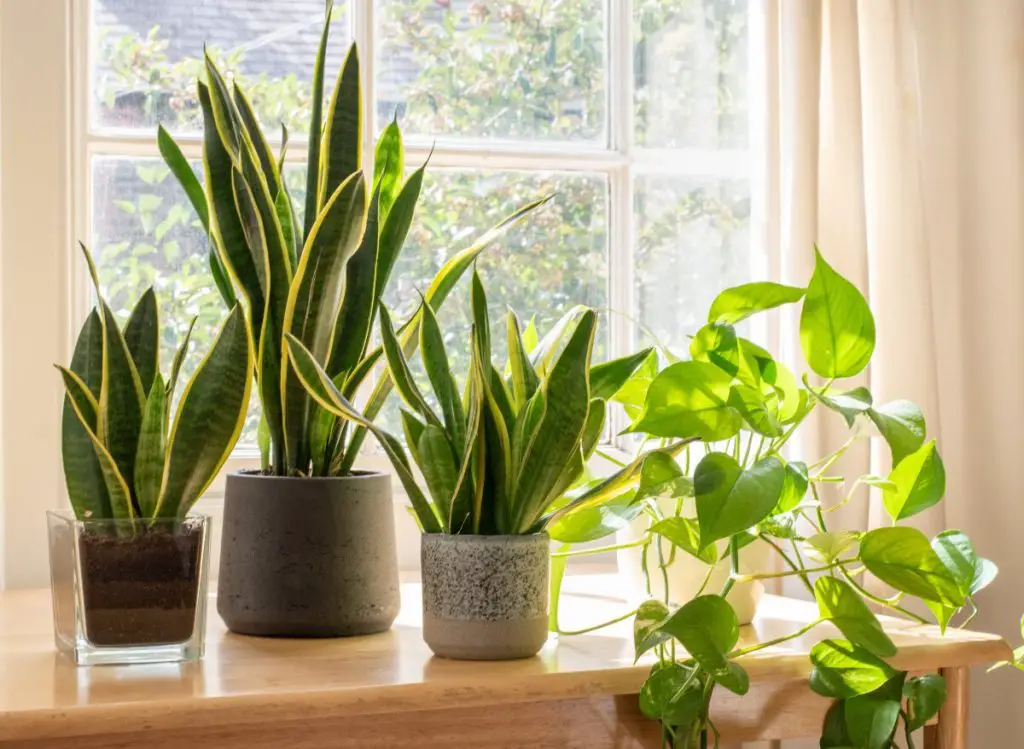
9- Recurvata Beaucarnea
Recurvata Beaucarnea is also called Ponytail palm trees. These plants, despite their name and look, are succulents from the Agave family, not palm trees.
The bulbous trunk, which itself is utilized to retain water, and the long and thin, hair-like leaves that sprout from the tip of the stem like a ponytail, providing it the impression of a ponytailed palm tree, are the most striking features of this plant.
See also: 5 Must-Know To Make an Aeonium Branch Out.
They require quick-draining soil, and also, because of those who retain moisture in their trunks, it is critical to allow them to dry out between watering and avoid allowing them to sit in water hence can be a choice for the Best Indoor Succulents Low Light.
| Genus name | Beaucarnea recurvata |
| Common name | – Elephant’s foot – Ponytail palm, |
| Plant type | – Tree – Broadleaf evergreen shrub |
| Mature Size | – 72 to 96 inches (182.88 to 243.84 cm) tall – 36 to 60 inches (91.44 to 152.4 cm) spread – They grow up to 360 inches (914.4 cm) tall when grown outdoors |
| Watering requirements | – Water ponytail palms during their growing season every seven to 14 days, but avoid overwatering them. – Reduce watering to once a month during the winter season. |
| Soil requirement | It prefers rich, sandy, and well-draining soil |
| Sun exposure | Ponytail palm prefers full sun |
| Temperature | – Ponytail palms prefer temperatures above 60 degrees Fahrenheit. – However, they will also survive lower than 50 degrees Fahrenheit in a short period. |
| pH | 6.5 to 7.5 |
| Flower Color | Creamy white |
| Bloom time | Seasonal bloomer |
| USDA Hardiness Zone | 10 to 11 |
| Region of Origin | Semi-desert regions of Central America |
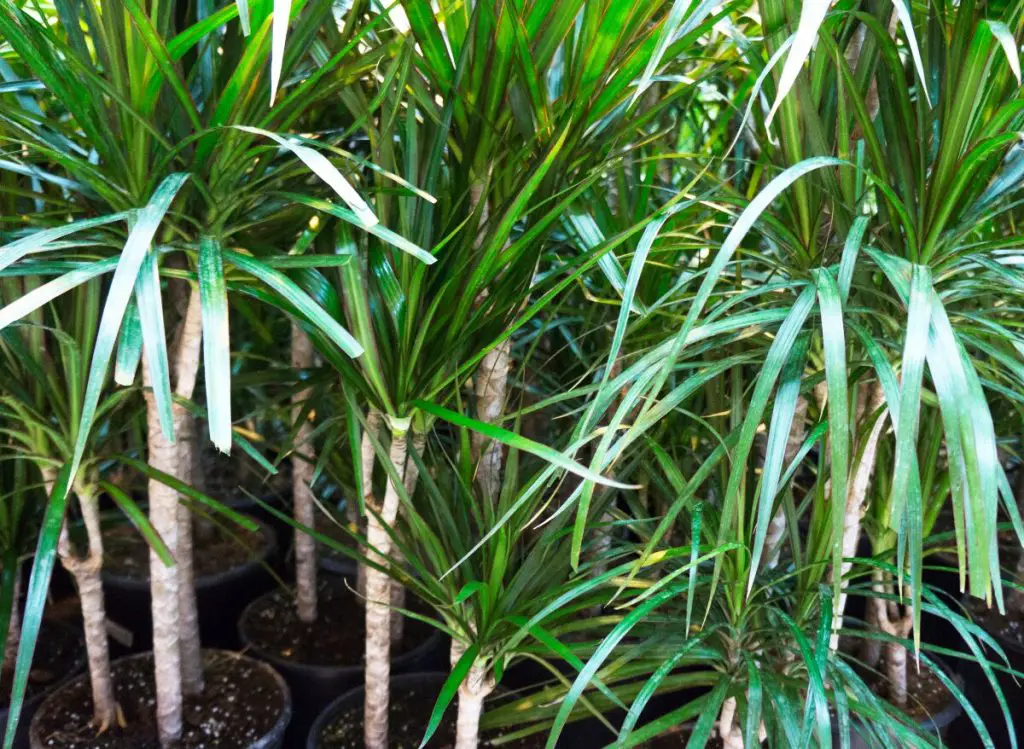
Wrapping Up
Succulents are not only easy plants to grow, but also they provide tremendous benefits. Additionally, succulents are one of the most versatile plants and also offer many benefits.
You can add any of these nine best indoor succulents low light to your house, offices, or garden to reap all the benefits of growing succulents.


